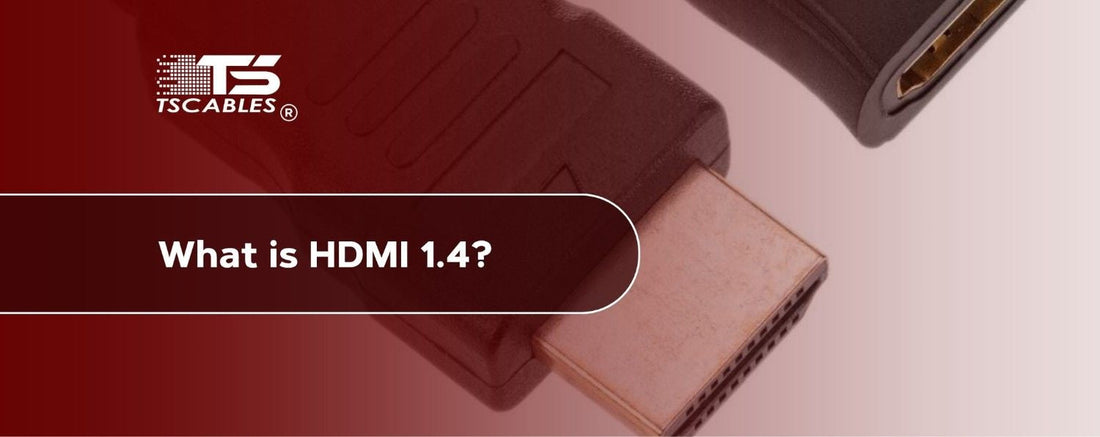Technology keeps moving forward with new upgrades coming in from time to time. However, not everyone upgrades right away. That’s where HDMI 1.4 still matters. Even if it came out years ago, it powers TVs, monitors, and devices that many people still use.
It connects screens and sounds without needing something fancy. If your TV or gaming console is a few years old, there’s a good chance it uses HDMI 1.4. But what does it really do? How does it help you? And what should you know to make the most of it without getting tangled in wires? Let's break it down simply.
HDMI 1.4: What Does It Entail?
HDMI 1.4 came out in 2009. It added new features that made it better than older versions. The most talked-about one was support for 3D video. However, that wasn’t the only thing. It also brought in Ethernet support and better video resolutions.
If you had an HDMI 1.4 cable, you could now pass internet data and audio/video through the same wire. This version was a big deal back then, especially for people upgrading from analog connections. It helped make entertainment systems neater and easier.
Many TVs, DVD players, and game consoles added the HDMI 1.4 port. Some devices even started using 1.4 HDMI cable labels on their packaging just to show they supported it. It’s still found in living rooms, classrooms, and offices.
Key Specifications of HDMI 1.4
Before jumping into deep use cases, let’s talk about what makes HDMI 1.4 better than previous versions. These specs are what gave this version its boost over the older ones.
3D Video Support
This was the flashiest feature. HDMI 1.4 specs included support for full 3D video up to 1080p. Back then, 3D movies and games were hot. With HDMI 1.4, people didn’t need extra gear for 3D displays. It all worked through the same port.
Ethernet Over HDMI
Another neat feature was Ethernet. The HDMI 1.4 cable could now send internet signals if both devices supported it. This meant fewer wires. Instead of a separate LAN cable for smart TVs, everything could pass through one cable.
Audio Return Channel (ARC)
ARC was added to help soundbars and speakers. It allowed audio to travel in both directions. That meant TVs could send sound back to a receiver or soundbar without needing an extra audio cable. Many users didn’t even know this was possible with a simple HDMI 1.4 connection.
Support for 4K (But Limited)
Yes, HDMI 1.4 can handle 4K, but only at 24 frames per second. That’s okay for movies, but not ideal for fast games or sports. People often confuse this and think they’re getting full 4K. It’s good to check what your screen and device actually support.
Practical Uses of HDMI 1.4
Even today, HDMI 1.4 shows up in plenty of everyday tech. It's not fancy, but it does the job. It keeps things working, even when devices aren’t brand new.
Home Entertainment Systems
Most living rooms still have gear that uses HDMI 1.4. Whether it's a DVD player or an older gaming console, this version keeps the show going. You can enjoy movies in 1080p and even 3D if your TV supports it.
Projectors in Classrooms or Offices
Many projectors still run on HDMI 1.4 port. They don’t need fancy resolutions. Just clear visuals and sound. That’s why this version works fine for slideshows or lectures.
Connecting Laptops to TVs
Plenty of laptops still use a DP 1.4 to HDMI adapter. It lets you mirror your laptop screen to a TV. If the TV uses HDMI 1.4, you’ll still get crisp video and audio.
Basic Gaming Consoles
Consoles like the Xbox 360 and PlayStation 3 used this version. Casual gaming doesn’t demand higher specs. So, the 1.4 HDMI cable still keeps the fun alive in many homes.
Practical Issues and Tips for HDMI 1.4
Despite its usefulness, HDMI 1.4 has a few downsides. But don’t toss your old cables yet. There are simple fixes for common problems that pop up.
Limited 4K Performance
One big issue is how HDMI 1.4 handles 4K. It’s there, but limited to 24 frames per second. This makes videos look fine, but games can seem sluggish. If you want faster visuals, you may need something newer.
Audio Sync Problems
Sometimes the sound doesn’t match the video. That’s called audio lag. It can happen when ARC settings aren't set right. Try checking your TV and soundbar settings. Resetting them can often fix the issue.
Cable Confusion
Not all HDMI 1.4 cables don’t behave the same. Some are high-speed, and others aren’t. Always look for cables labeled “high speed” to get the best out of your setup.
Port Damage or Dirt
The HDMI port 1.4 on your device can get loose or dusty. That causes screen flickers or no signal. Use a soft brush or compressed air to clean the port. Never jam the cable in if it doesn’t slide in easily.
Final Thoughts
HDMI 1.4 still works for a wide range of devices, even in 2025. It’s not the newest version, but it’s reliable, simple, and still found everywhere. For basic setups, it holds its ground just fine.
TS Cables keeps you connected with strong, reliable wires built for performance. Their HDMI 1.4 cable options offer durability without any fuss or confusion.
FAQs
What resolution does HDMI 1.4 support?
It supports up to 4K at 24fps and 1080p at 60fps.
Does HDMI 1.4 support Ethernet?
Yes, if both devices support it, the internet can pass through the HDMI cable.
Can HDMI 1.4 play 3D content?
Yes, it can show 3D at 1080p if the device and screen support it.
What’s the difference between HDMI 1.4 and 2.0?
HDMI 1.4 vs 2.0 comes down to frame rate and bandwidth. 2.0 handles more.
Is HDMI 1.4 good for gaming?
It’s fine for casual gaming, but for smoother motion, newer versions are better.






